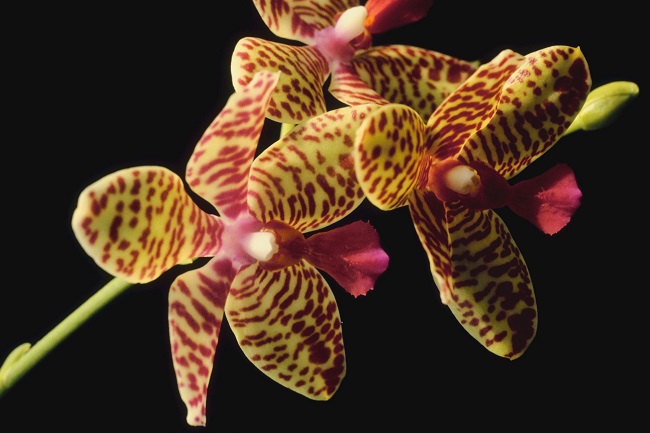
Not unlike lots of other plants, Orchids are also subject to a variety of pests and problems, and just like our moms used to say, “An ounce of prevention is truly worth a pound of cure.”
Keep Your Growing Area Clean
When that pot decides to jump off the bench on its own, don’t just pick it up and put it back. Any potting media left on the floor can (and will) continue to rot and become a host for all sorts of issues. Once a month spray the entire growing area: floors, benches, glass walls and the plants themselves (try to keep the spray off open flowers and buds) with a good fungicide, bactericide and virucide.
Inspect Your Collection Regularly
Getting control of a problem before it becomes disastrous is critical. A periodic close inspection of every plant will help ward off all sorts of problems. Check the undersides of the leaves, down the pseudo bulb and under the dry papery covering, a favorite place for scale to hide. If discovered and the infestation is not severe, a plastic spray bottle filled with Isopropyl Alcohol (rubbing alcohol) sprayed on the scale will quickly kill it. Do not spray it onto open flowers or buds. Look closely for signs of rot on new growth. If discovered, remove as much of the rot as possible, with a sterile cutting tool, then cover the wound with a sprinkling of cinnamon. Cinnamon is an excellent natural bactericide. Pay close attention to your Phalaenopsis, crown rot can occur rapidly, but if caught early enough and treated, the plant can be saved.
Maintain Constant Air Movement
Nothing will create more problems than stagnant, moist stale air. Fans running continuously, particularly during the day, are critical to any Orchid plant. Fungal diseases can attack a plant in very short order and unless controlled immediately will cause the death of the plant.
Repot in a Clean and Sterile Environment
Pots should be cleaned with a mild bleach solution (especially if they will be reused). Place several sheets of newspaper under each repot, then discarding them when you are finished will help eliminate the transmission of disease. Allow the repotted plant to recover by withholding watering for a couple of days. Misting will help prevent dehydration during this time and then resume normal watering.
Tom Capranica has been a hobby collector and hybridizer of Orchids for over 20 years, and an active member of the American Orchid Society for about the same length of time. He grows his Orchids in a 450 sq. ft. climate-controlled greenhouse, containing over 300 plants of various genera, primarily Cattleya.
Related Articles & Free Email Newsletter
Cymbidiums, The Orchid That Made the Corsage Famous




Comment here